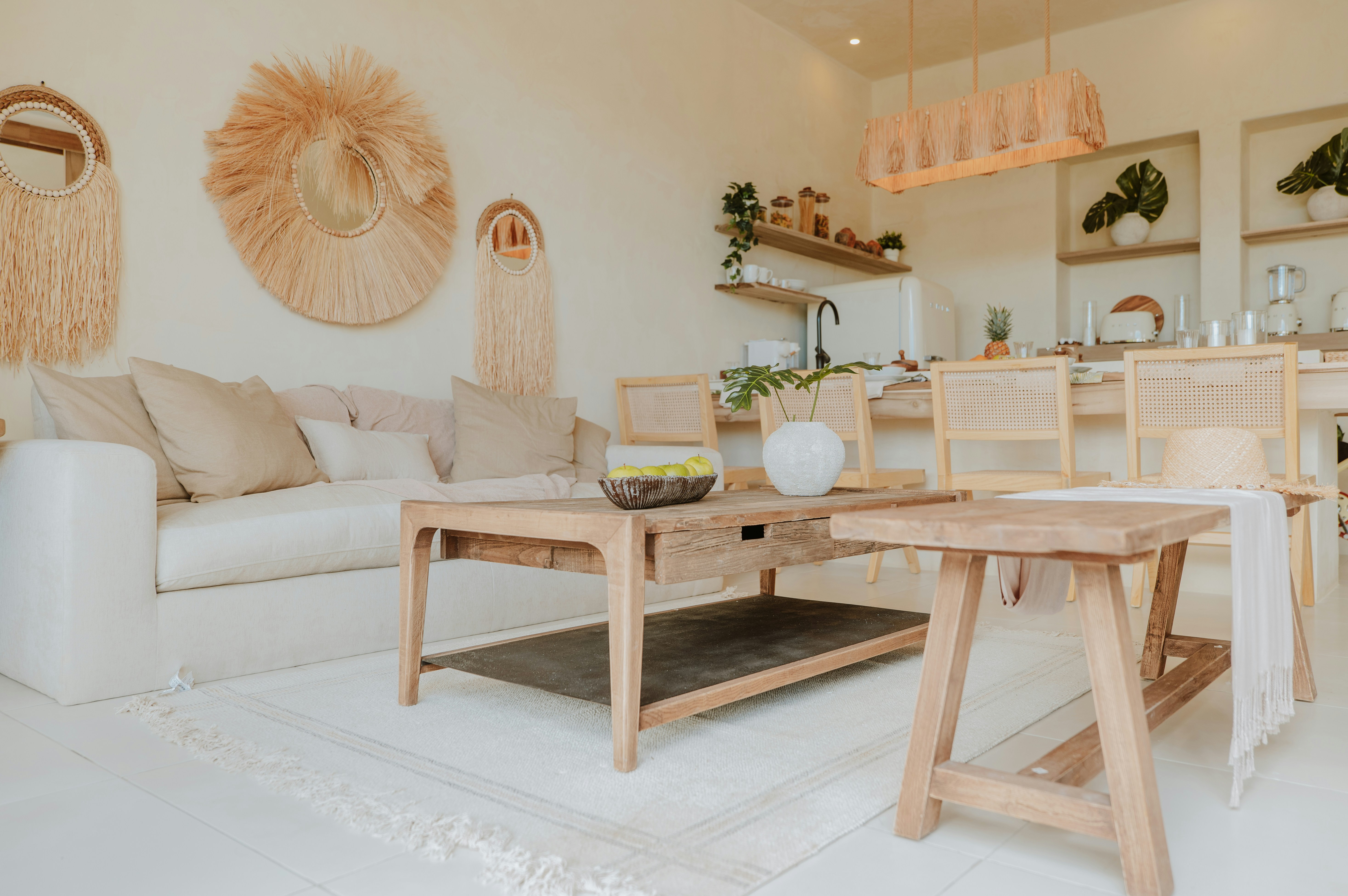Eco-Chic Interiors: Sustainable Design Ideas for a Greener Home


Sustainable living is no longer just a trend—it’s a conscious lifestyle choice. As we become more aware of our environmental footprint, sustainable interior design has emerged as a beautiful and practical way to care for the planet without compromising on style.
Eco-chic design marries sustainability with aesthetics, proving that going green can be effortlessly elegant. Whether you’re planning a full renovation or small updates, here’s how to design a greener, more mindful home.
1. Choose Sustainable Materials
Sustainable interiors start with conscious material choices. Look for options that are renewable, recyclable, or reclaimed:
- Reclaimed Wood: Adds character and warmth, while reducing the demand for virgin timber.
- Bamboo: A fast-growing, durable alternative for flooring or furniture.
- Cork: Renewable, hypoallergenic, and soft underfoot—perfect for flooring or wall panels.
- Recycled Metal and Glass: Ideal for fixtures, countertops, and decor.
Tip: Always check certifications like FSC (Forest Stewardship Council) or Greenguard for eco-verified products.
2. Embrace Vintage and Upcycled Furniture
New isn’t always better. Repurposing old furniture helps reduce waste and adds unique charm to your space.
- Antique Finds: Incorporate vintage dressers, dining sets, or sideboards.
- Upcycled Projects: Give old pieces new life with a fresh coat of low-VOC paint or updated hardware.
- Thrift and Swap: Explore secondhand stores or community swaps to find treasures without a carbon footprint.
Tip: Mixing old and new creates a curated, timeless aesthetic that stands out.
3. Opt for Non-Toxic Finishes and Paints
The air inside our homes can be more polluted than outside due to off-gassing from paints and finishes. Choose non-toxic options:
- Low-VOC or Zero-VOC Paints: Better for indoor air quality and safer for families.
- Natural Finishes: Linseed oil, beeswax, and milk paint offer beautiful, breathable alternatives.
- Formaldehyde-Free Products: Especially for cabinets, flooring, and built-in carpentry.
Tip: Ventilate during renovations and look for green certifications on all materials.
4. Maximise Natural Light and Ventilation
Using natural light not only reduces your energy bill but also creates a healthier home:
- Skylights or Larger Windows: Increase daylight exposure and reduce reliance on artificial lighting.
- Light-Coloured Interiors: Reflect light more effectively and open up smaller spaces.
- Cross-Ventilation: Strategically placed windows and doors encourage airflow and reduce the need for air conditioning.
Tip: Use sheer curtains or bamboo blinds to let in light while maintaining privacy.
5. Incorporate Energy-Efficient Fixtures
Small upgrades can have a big impact:
- LED Lighting: Uses significantly less energy and lasts longer than traditional bulbs.
- Smart Thermostats: Automatically adjust temperature settings to reduce energy use.
- Water-Saving Taps and Toilets: Minimise water waste without sacrificing functionality.
Tip: Choose appliances with an ENERGY STAR rating to ensure high efficiency.
6. Decorate with Nature in Mind
Bring the outdoors in and make your home a soothing, sustainable sanctuary:
- Houseplants: Improve air quality, reduce stress, and add vibrancy.
- Natural Fibres: Use jute, hemp, organic cotton, or wool for rugs, cushions, and throws.
- Eco-Friendly Decor: Handmade ceramics, sustainable wood art, or woven baskets are both beautiful and ethical.
Tip: Buy local to support nearby artisans and reduce transport emissions.
7. Design for Longevity
Fast furniture and trendy finishes often end up in landfills. Design with durability and timelessness in mind:
- Quality Over Quantity: Invest in fewer, well-made pieces that will last.
- Neutral Base: Choose classic colours and materials that can adapt to evolving styles.
- Flexible Layouts: Modular furniture and multipurpose rooms add future-proof value.
Tip: Think long-term—choose styles and materials you’ll love for years.
Final Thoughts
Sustainable design doesn’t mean sacrificing beauty. Eco-chic interiors prove that style and sustainability can coexist in perfect harmony. By making mindful choices about materials, furniture, lighting, and decor, you can create a home that reflects your values while remaining visually stunning.
A greener home is not just better for the environment—it’s healthier, more personal, and built to last.












